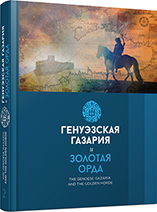Монгольский могильник середины XIII — начала XV вв. Окошки 1 в Юго-Восточном Забайкалье: конструктивные и антропологические аспекты
The Mongol Cemetery of the Mid-13th — Early 15th Centuries Okoshki 1 in the South-Eastern Transbaikalia: constructive and anthropological aspects
Author(s): Artur V. Kharinsky, Marina P. Rykun, Evgeny V. Kovychev, Nikolay Nikolaevich Kradin
Subject(s): History, Archaeology, Social history, Middle Ages, 13th to 14th Centuries
Published by: Издательский дом Stratum, Университет «Высшая антропологическая школа»
Keywords: Mongol Empire; Mongols; Transbaikalia; funerary ritual; gravestone; grave pit; human remains
Summary/Abstract: The cemetery Okoshki 1 is located in South-Eastern Transbaikalia, in the valley of the Urulyunguy river. Majority of these burials belong to the middle of the 13th — the beginning of the 15th centuries. The Khirkhira town, located at the distance of 1.5 km to the south-east of the cemetery Okoshki 1, is dated by the same time. For several decades, Okoshki 1 was the cemetery for the residents of this ancient town founded by Yesünggü, a nephew of Genghis Khan. The people buried on the cemetery belong to different social groups. Their burials differ by the form of tumulus, grave chambers and sizes of grave pits. The largest funerary structures are found in the south-western part of the burial ground and are represented by ground barrows with a diameter of 11—14 m and 0.7—1.2 m high. Stone barrows with a diameter of 4.7—6.0 m and 0.3—0.4 m high are localized in south-western and central parts of the burial ground. Flat stone structures, 2—8 m in diameter, are located in the central and south-eastern parts of the necropolis. So far, Okoshki 1 yielded 14 Mongol burials of the imperial period. All examined skulls typically belong to the Central Asian anthropological type. Judging by features of the funerary ritual and anthropological data, the people of lower social status, those who worked hard, were buried in the north-eastern part of the cemetery, while the south-western part of the necropolis was reserved for the elite.
Book: Генуэзская Газария и Золотая Орда
- Page Range: 69-106
- Page Count: 38
- Publication Year: 2019
- Language: Russian
- Content File-PDF

